Abstract
Point-source environmental hazards are often identified by examination of unusual clusters of disease cases. The very large number of potential clusters give rise to the statistical problem of "multiple inference," i.e., the more clusters examined, the greater the risk of "false-positive" associations emerging by chance alone. This paper first distinguishes the situation of clusters identified by anecdotal observation from those that emerge from systematic searches. The latter may or may not include a systematic enumeration of potential causal factors associated with each potential disease cluster. If exposure information is not systematically available, empirical Bayes procedures are suggested as a basis for ranking the observed clusters in order of priority for further investigation. If exposure information is systematically available, empirical Bayes procedures can be used to select associations to report or to rank them in order of priority for confirmation. In addition, procedures are described for testing the global null hypothesis of no exposure-disease associations and for estimating the number of true-positive associations. These approaches are advocated in preference to classical frequentist approaches of multiplying p values by the number of tests performed.
Full text
PDF
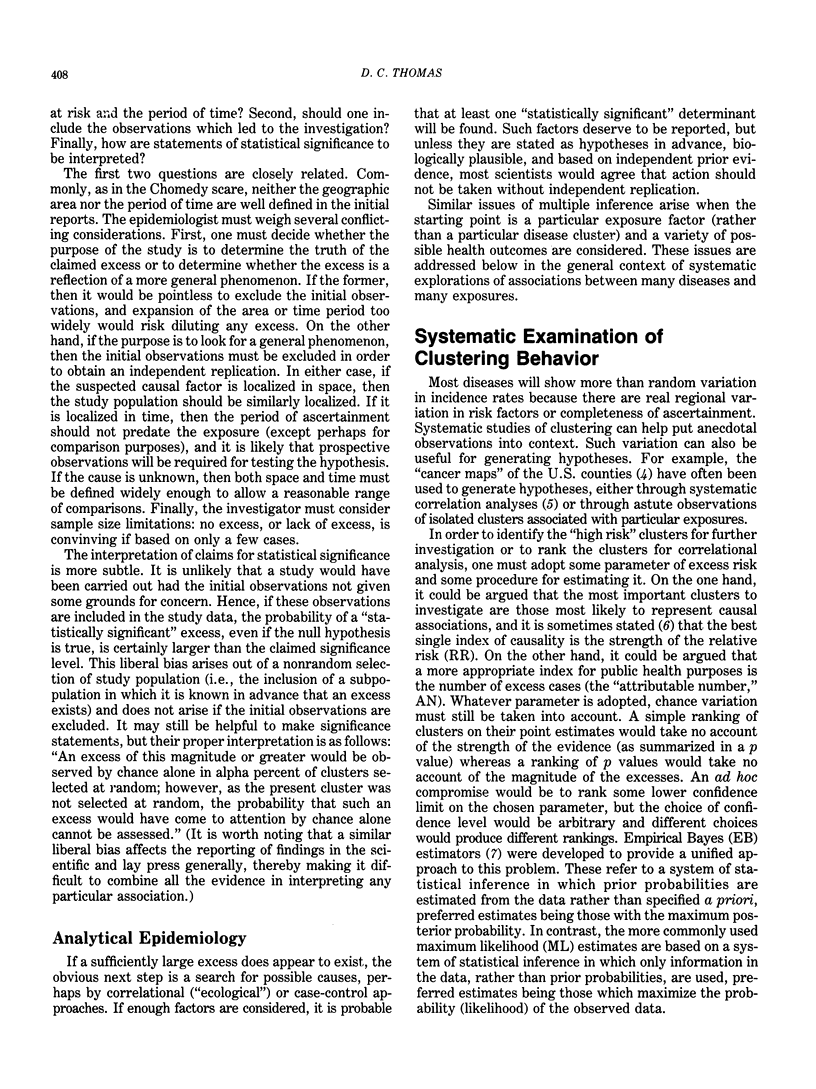
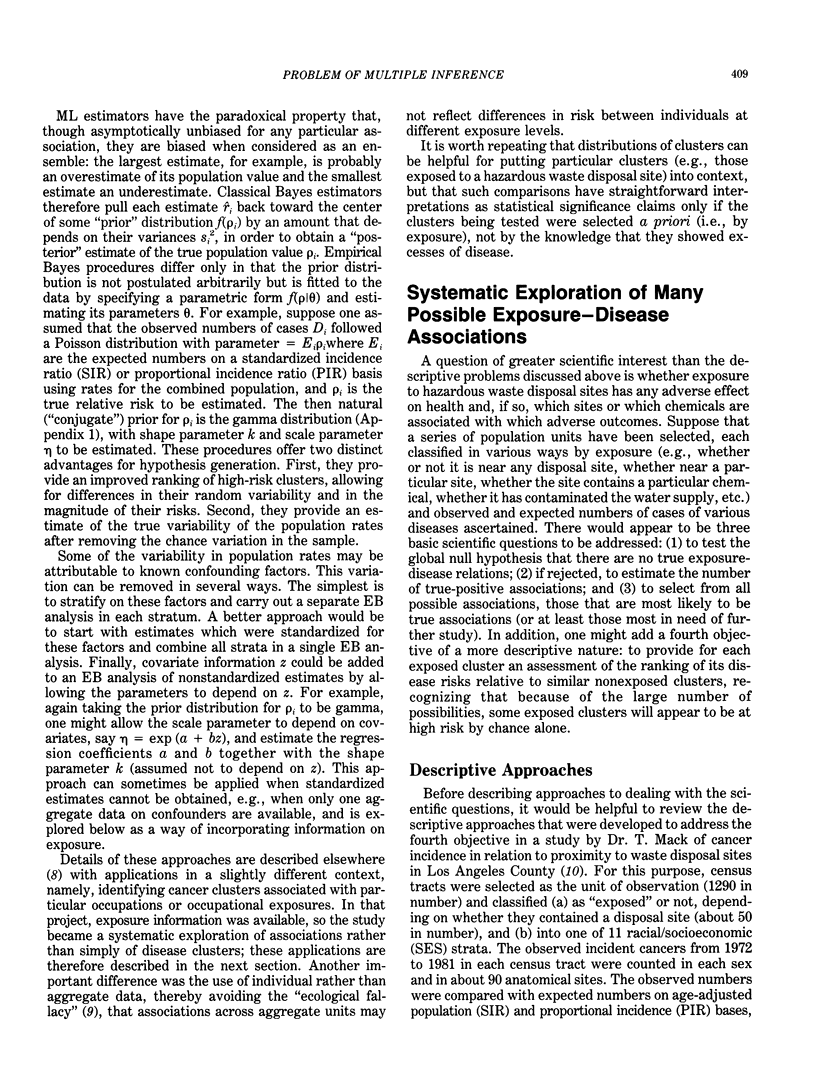
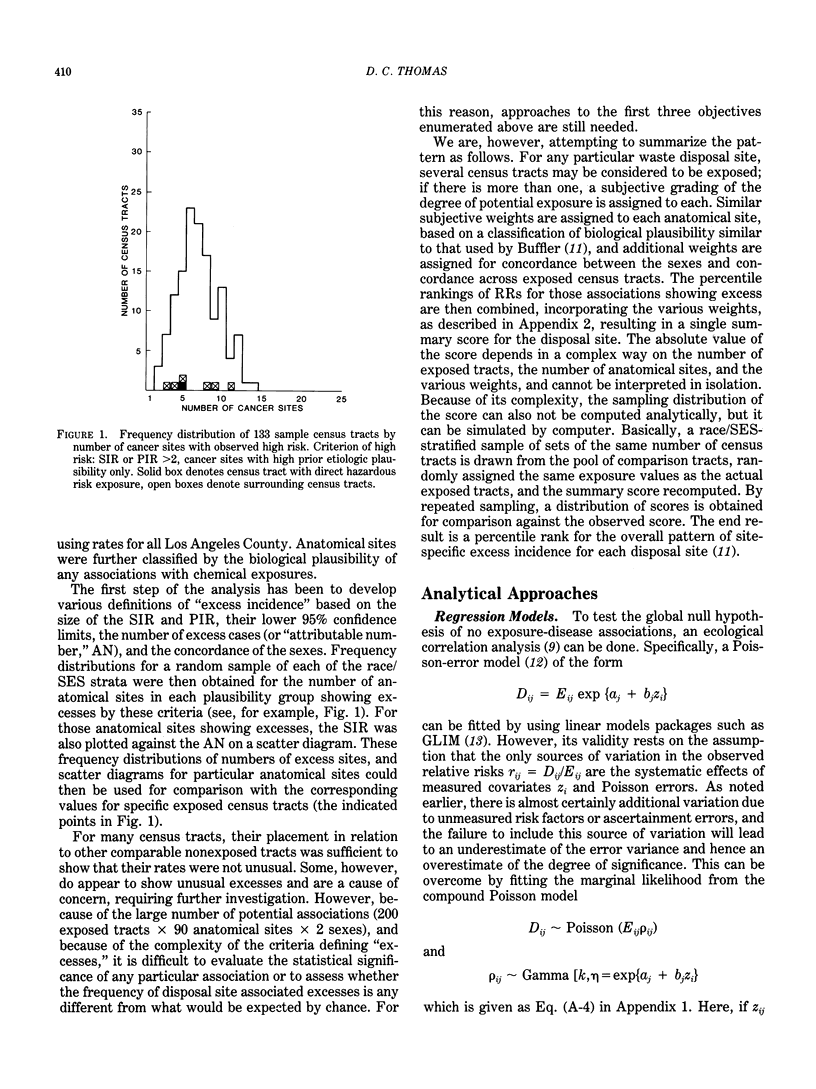
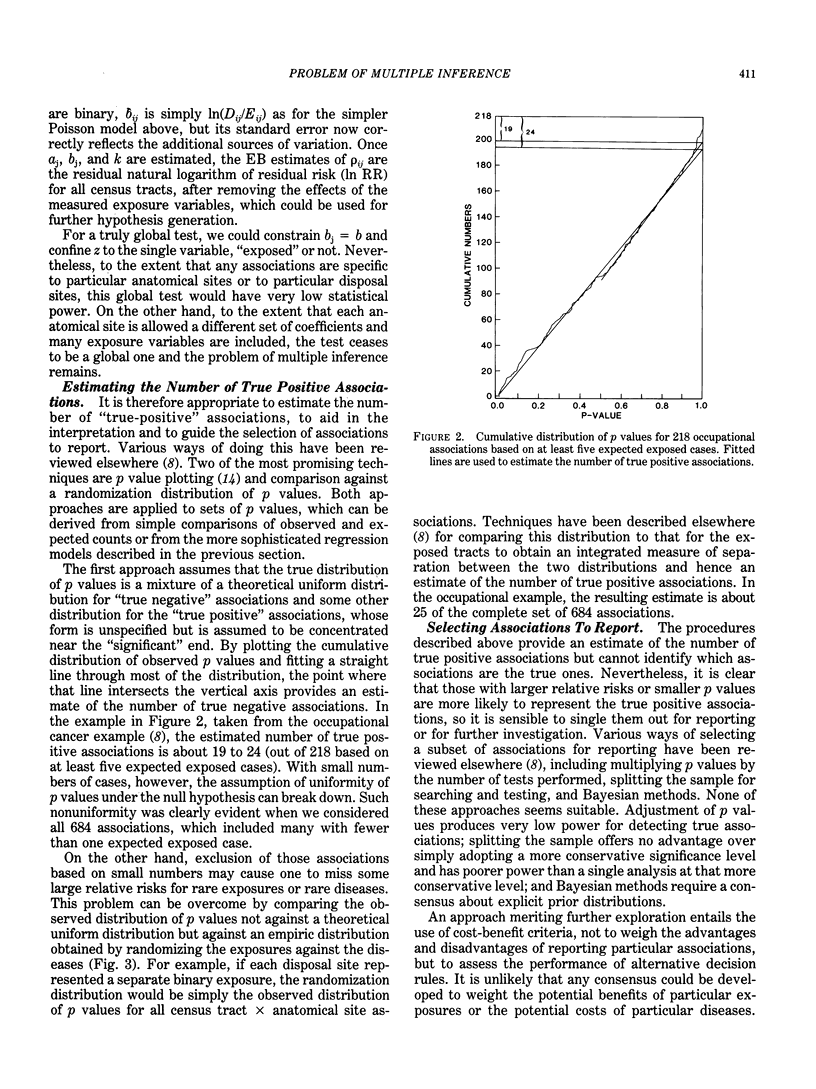
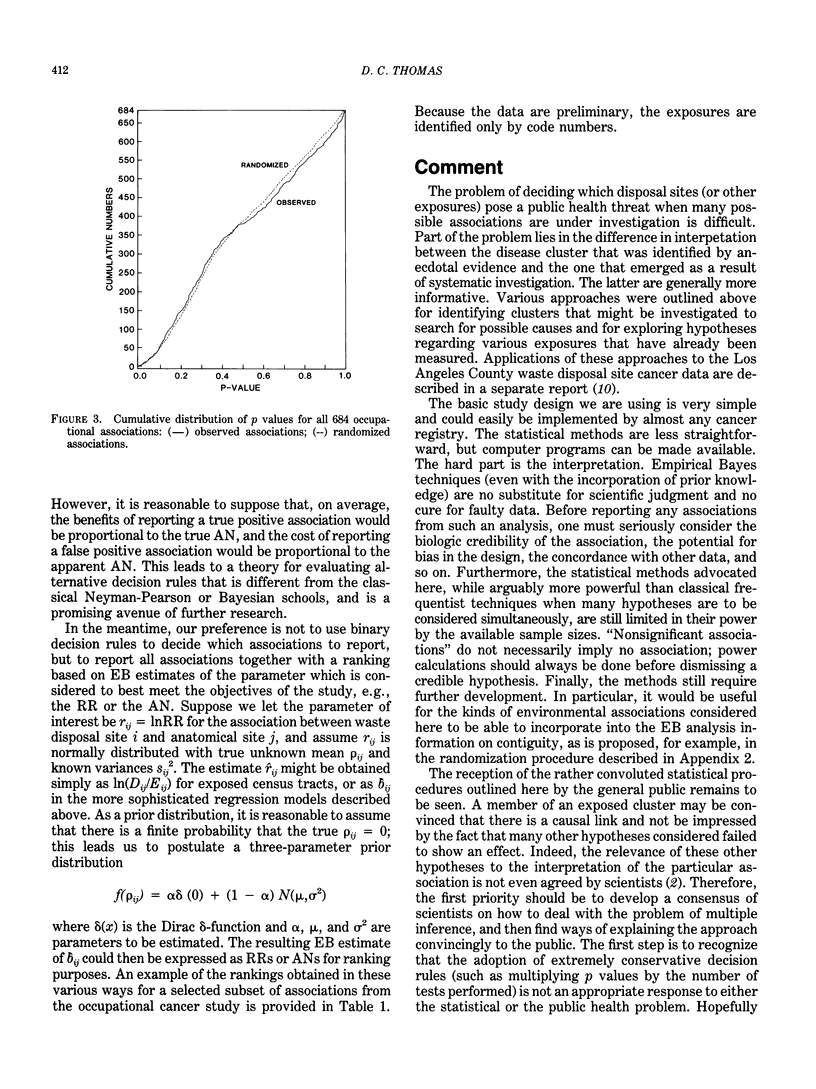


Selected References
These references are in PubMed. This may not be the complete list of references from this article.
- Blot W. J., Fraumeni J. F., Jr Geographic patterns of lung cancer: industrial correlations. Am J Epidemiol. 1976 Jun;103(6):539–550. doi: 10.1093/oxfordjournals.aje.a112258. [DOI] [PubMed] [Google Scholar]
- Buffler P. A., Crane M., Key M. M. Possibilities of detecting health effects by studies of populations exposed to chemicals from waste disposal sites. Environ Health Perspect. 1985 Oct;62:423–456. doi: 10.1289/ehp.8562423. [DOI] [PMC free article] [PubMed] [Google Scholar]
- Cole P. The evolving case-control study. J Chronic Dis. 1979;32(1-2):15–27. doi: 10.1016/0021-9681(79)90006-7. [DOI] [PubMed] [Google Scholar]
- Frome E. L. The analysis of rates using Poisson regression models. Biometrics. 1983 Sep;39(3):665–674. [PubMed] [Google Scholar]
- Neutra R. R. Epidemiology for and with a distrustful community. Environ Health Perspect. 1985 Oct;62:393–397. doi: 10.1289/ehp.8562393. [DOI] [PMC free article] [PubMed] [Google Scholar]
- Spitzer W. O., Shenker S. C., Hill G. B. Cancer in a Montreal suburb: the investigation of a nonepidemic. Can Med Assoc J. 1982 Nov 15;127(10):971–974. [PMC free article] [PubMed] [Google Scholar]


